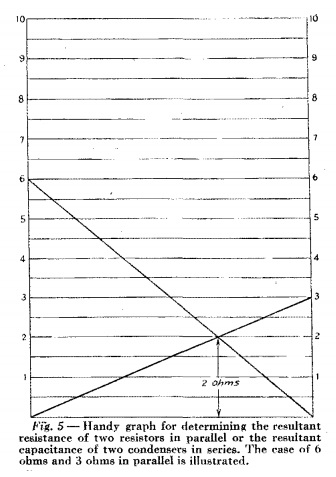 This handy method of determining parallel resistance (or parallel inductance or series capacitance) appeared in QST 75 years ago this month. It was sent in to Hints and Kinks by O.C. Crossland, W9IXV. All you need is a sheet of lined paper–it doesn’t even need to be graph paper. You just need to make two vertical lines.
This handy method of determining parallel resistance (or parallel inductance or series capacitance) appeared in QST 75 years ago this month. It was sent in to Hints and Kinks by O.C. Crossland, W9IXV. All you need is a sheet of lined paper–it doesn’t even need to be graph paper. You just need to make two vertical lines.
The example shown here computes the value when the two parallel resistors are 6 ohms and 3 ohms.
Today, this would be a simple application of the product over the sum rule. You would go to the calculator function of your phone and enter (6 x 3) / (6 + 3), and get the answer of 2.
But believe it or not, in 1943, the phones didn’t have built-in calculators. In fact, they didn’t have calculators at all! Instead, this graphical method could be used: You draw a line from 6 on the left scale to the base of the right scale. Then, draw another line from 3 on the right scale to the base of the left scale. The point of intersection of the two lines is the answer, 2 ohms.
